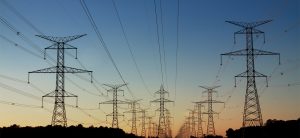- OUR APPROACH
-
COMMITTED TO YOUR SUCCESS
Our approach, developed over decades of experience, is fine-tuned to get the results you want.
We deliver concept-to-completion solutions, designed by temporary power specialists with access to the largest inventory of high-quality power generation and distribution equipment in North America.
-
- Equipment
-
RENTALS
From a wide range of diesel and natural gas generators to transformers, cable, light towers and more, our large rental fleet and extensive vendor network ensure we’ll have the temporary power equipment that your project requires — every time.

-
- Industries
-
INDUSTRIES WE SERVE
For nearly 20 years, we have been at work powering projects across Canada’s industrial sectors.
Select from this sampling of industries to learn how we can put our expertise to work for you.
VIEW ALL- Projects
- About
-
A PROUD HISTORY. A BRIGHT FUTURE.
From our inception in 1998, we have been building our team on a foundation of excellence. Our team members’ passion, expertise and commitment are what have allowed us to grow into a national company with projects across Canada.
Click on the links to learn more about our history, our team or our career opportunities.
- Blog
- Contact
-
Table of Contents:
- Volcano Lightning
- Ball Lightning
- The Everlasting Storm
- St. Elmo’s Fire
- Whistlers
- Sprites
- Wire Corona
- The Platypus
- Electric Rays
- Oriental Hornets
We’ve contained electricity. Constrained it. Placed it behind walls and in wires, funneled it into vast networks arcing high above our heads and buried deep underground. But it still has a few secrets left — here are 10 of the strangest natural electrical phenomena ever recorded.
Volcano Lightning
Also called “dirty thunderstorms”, these lightning strikes occur in the wake of massive volcanic eruptions. There’s no consensus on the cause, but many experts believe that plumes of ash create enough static electricity to generate the storms.
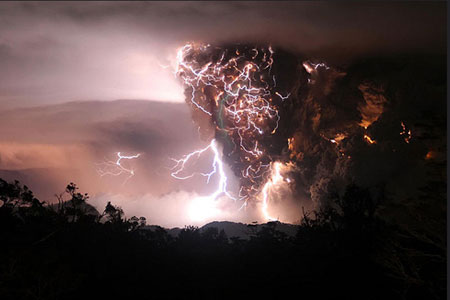
Ball Lightning
Another type of lightning is still not fully understood — and not even officially recognized until the late 1960s. Those who have seen ball lightning often describe it as hovering just a few feet above the ground, crackling, fizzing and occasionally exploding. Some claim it moves into buildings and floats down hallways, avoiding people and other objects. Scientists in China speculate the balls may be the result of vaporized silicon oxide; after a ground lightning strike, the released vapor reacts with oxygen to produce a glowing orb.
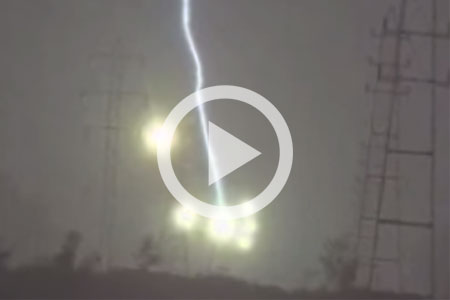
The Everlasting Storm
At the mouth of the Catatumbo River in Venezuela, a lightning storm rages almost 300 nights per year. Each night tens of thousands of bolts rain down, possibly caused by rising methane swamp gas meeting billowing Andes’ winds — no matter the source, the end result is beautiful and terrifying.
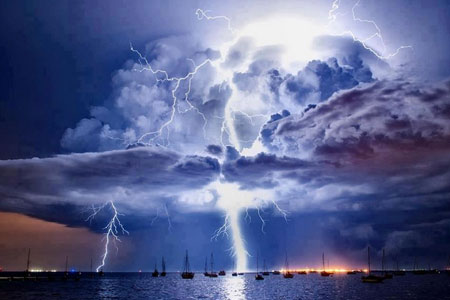
St. Elmo’s Fire
First observed by sailors, St. Elmo’s Fire is an other-worldly blue or violet flame that appears around ships and heralds the end of powerful storms. The explanation? A difference in voltage between the sea and surrounding atmosphere causes the ionization of gas, especially at high points such as the top of masts. This effect also occurs at the top of church steeples and around airplane wings. Photo by Tom

Photo by wikipedia.org
Whistlers
Also called the “electromagnetic dawn chorus,” Whistlers are high-pitched sounds created in the upper atmosphere during lightning storms. They’re said to sound like birdsong by the “hunters” who chase them down.
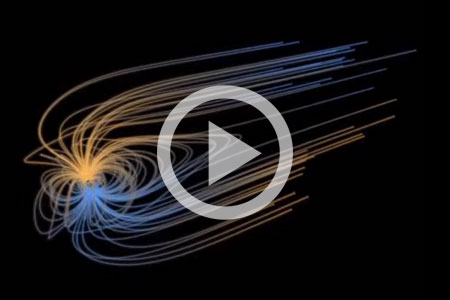
Sprites
Sprites are a kind of plasma discharge that result in massive, bright-red flashes up to 50 kilometers across. Due to their high altitude sprites are largely harmless but planes or monitoring equipment caught in their wake could suffer electrical failure.
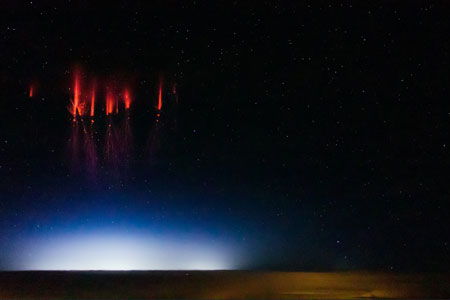
Wire Corona
Occurring on powerlines, these bright lights called Wire Corona may be caused by static buildup on nearby towers and lines and may provide an explanation for the number of “UFO” sightings in these areas.
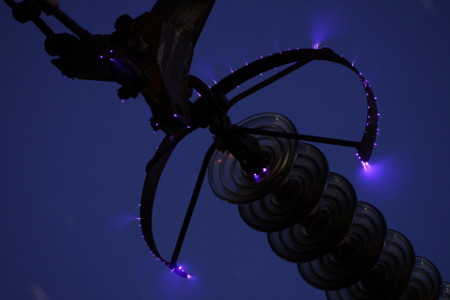
The Platypus
Not all mysterious electrical phenomena are storm-related; the animal kingdom is full of uniquely charged animals. The platypus, for example, tracks prey using the 40,000 electric sensors on its beak.

Electric Rays
Certain rays, meanwhile, can generate their own electric fields, with some able to produce 220 volts when threatened.

Photo by Chuck Sumner
Oriental Hornets
Active during the hottest part of the day, these hornets are solar-powered: Their brown stripes catch the sunlight, while their yellow stripes convert and store energy.

Photo by Rachid H
Despite its familiarity and ease of use, there’s still much about electricity we simply don’t know. Fortunately, there are a host of natural phenomena to help us better understand — and improve.
To learn about Trinity Power’s temporary power solutions, click here.
Related Articles
Subscribe for access to exclusive content



